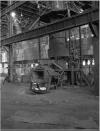Abstract
As in many countries of the world the railway was in Argentina, in the late nineteenth century, the main agent of change in theterritory. Especially in northwest Argentina, it was installed a system of settlements that produced an important impact at thegeographic, urban - territorial, political, economic and social level. The last link in this system was the architecture and complementarybuildings that allowed the development of new spaces to perform the functions of loading and unloading of rawmaterials and the rise and drop off passengers. It was one of the new nineteenth-century architectural programs, and perhapsthe most variety of scales and types reached.This study identifies the types of architecture, functional elements and componentsof the railway system in the different seasons of the provinces. As a result we give the architectural features of the system asa model employed, who was part of a functional interconnection. The research was based on a fieldwork and consultation ofdisjointed railway files, interviews with key informants and the preparation of an inventory of railway architecture in which wehas been detected 208 stations in the region.Apuntes is registered under a Creative Commons Attribution 4.0 International Public License. Thus, this work may be reproduced, distributed, and publicly shared in digital format, as long as the names of the authors and Pontificia Universidad Javeriana are acknowledged. Others are allowed to quote, adapt, transform, auto-archive, republish, and create based on this material, for any purpose (even commercial ones), provided the authorship is duly acknowledged, a link to the original work is provided, and it is specified if changes have been made. Pontificia Universidad Javeriana does not hold the rights of published works and the authors are solely responsible for the contents of their works; they keep the moral, intellectual, privacy, and publicity rights.
Approving the intervention of the work (review, copy-editing, translation, layout) and the following outreach, are granted through an use license and not through an assignment of rights. This means the journal and Pontificia Universidad Javeriana cannot be held responsible for any ethical malpractice by the authors. As a consequence of the protection granted by the use license, the journal is not required to publish recantations or modify information already published, unless the errata stems from the editorial management process. Publishing contents in this journal does not generate royalties for contributors.


